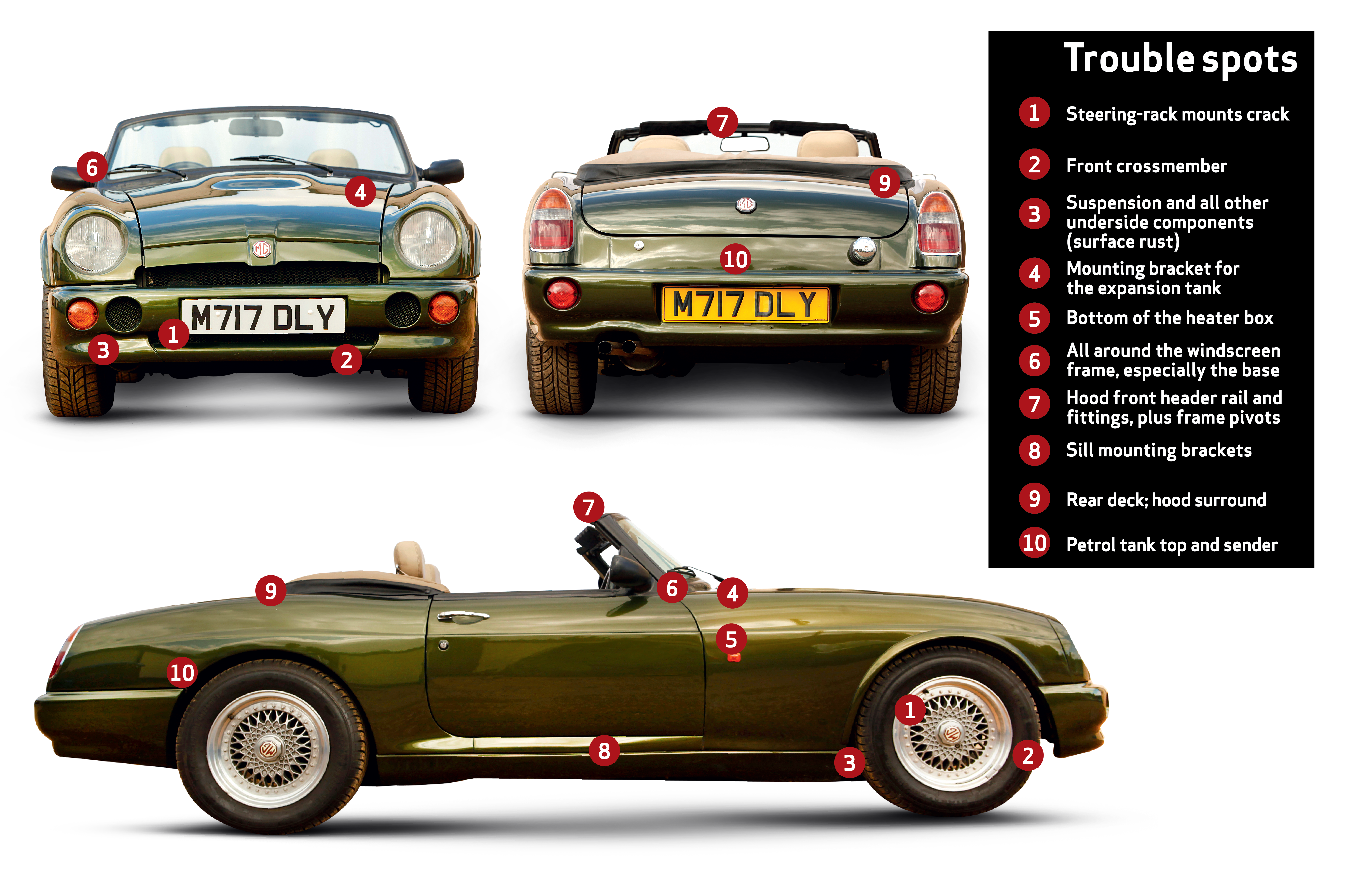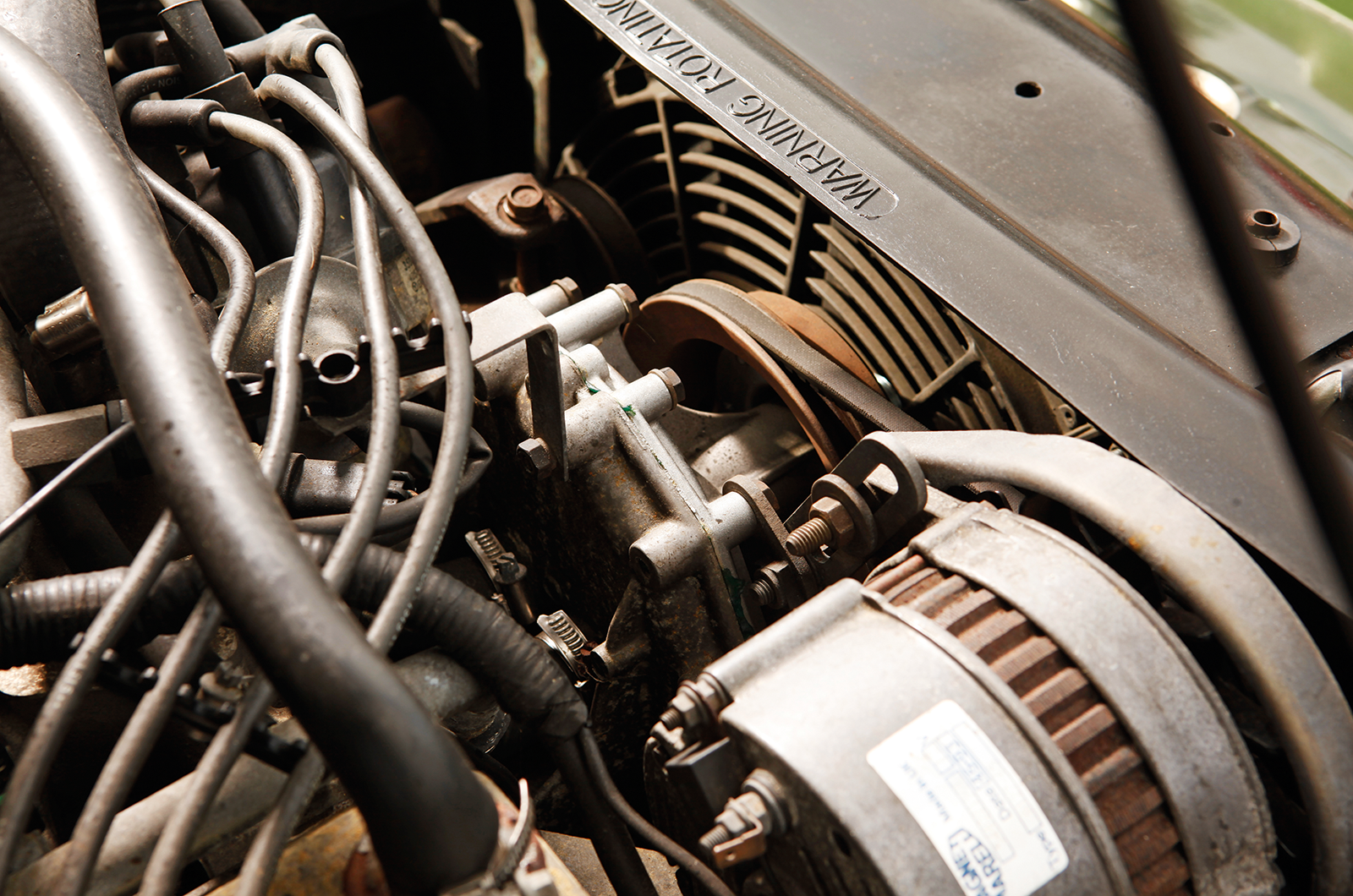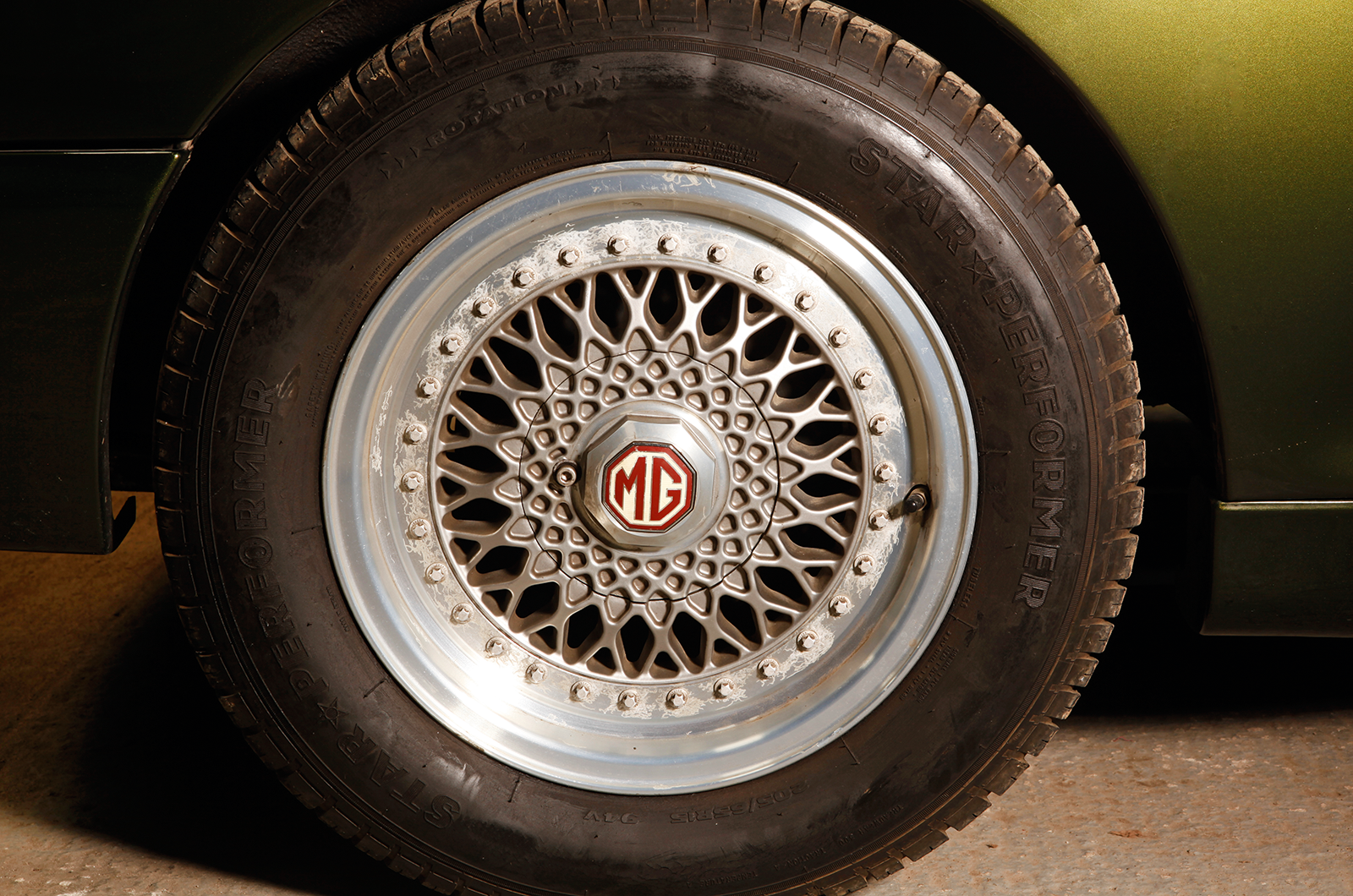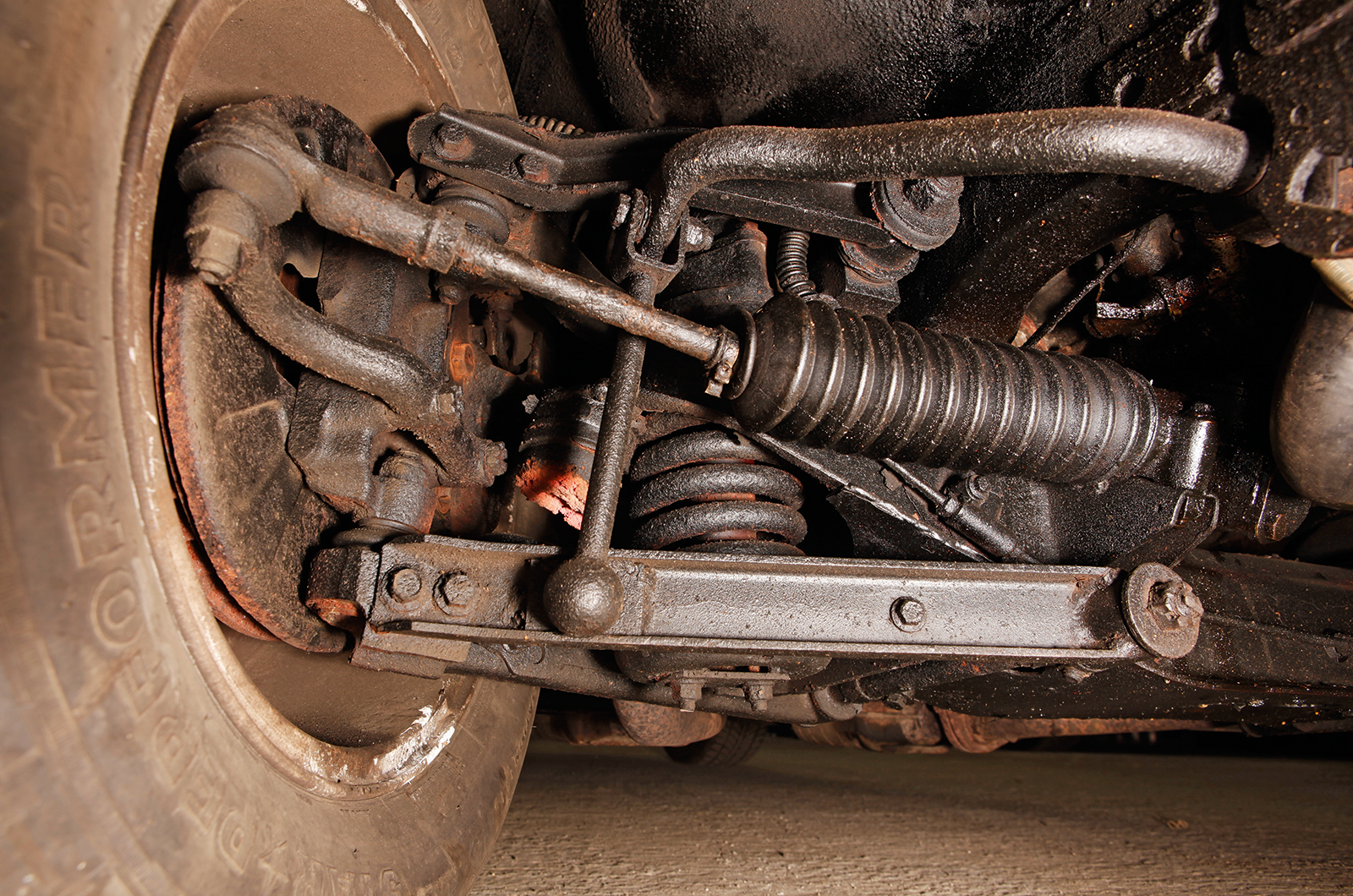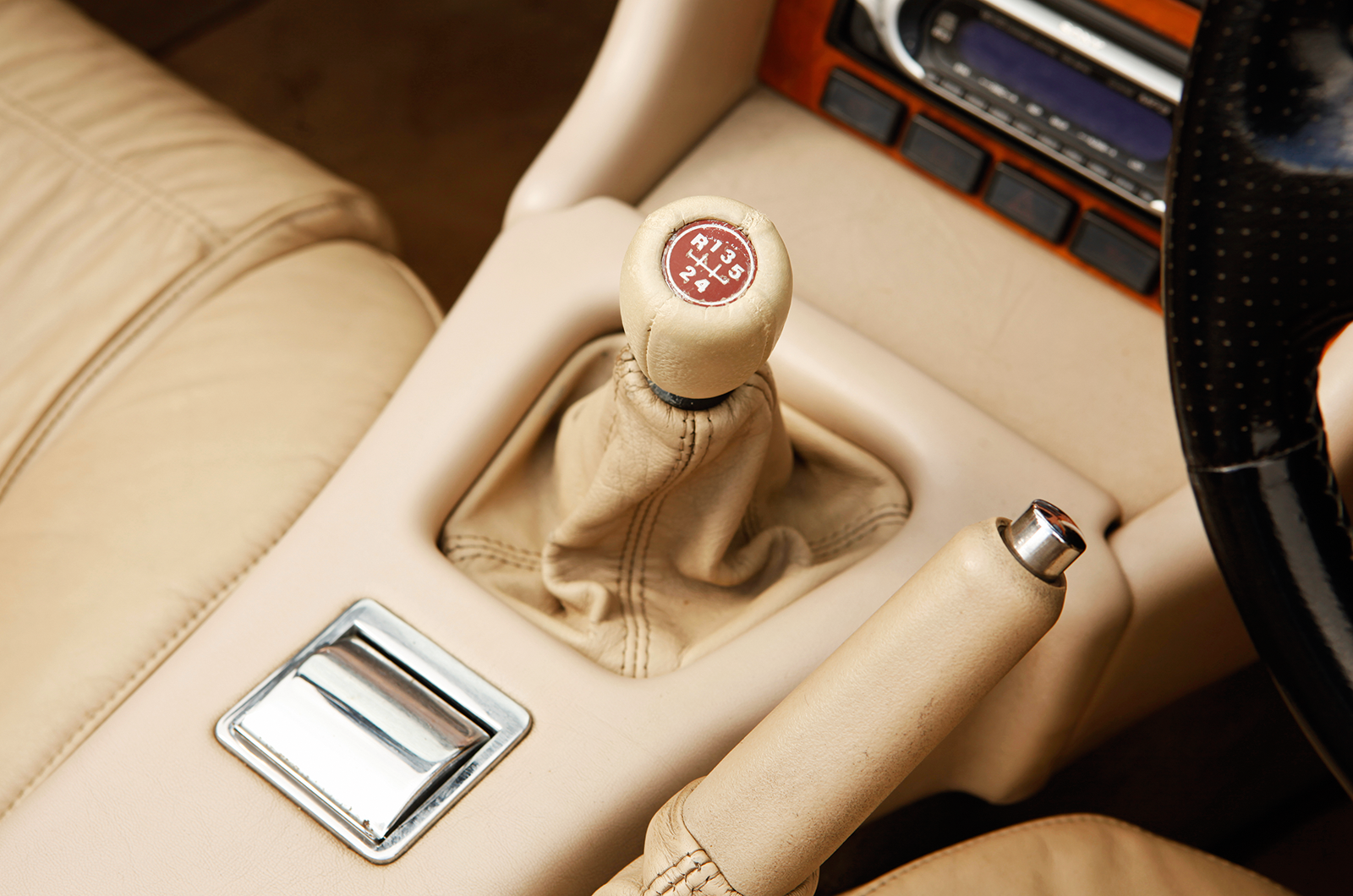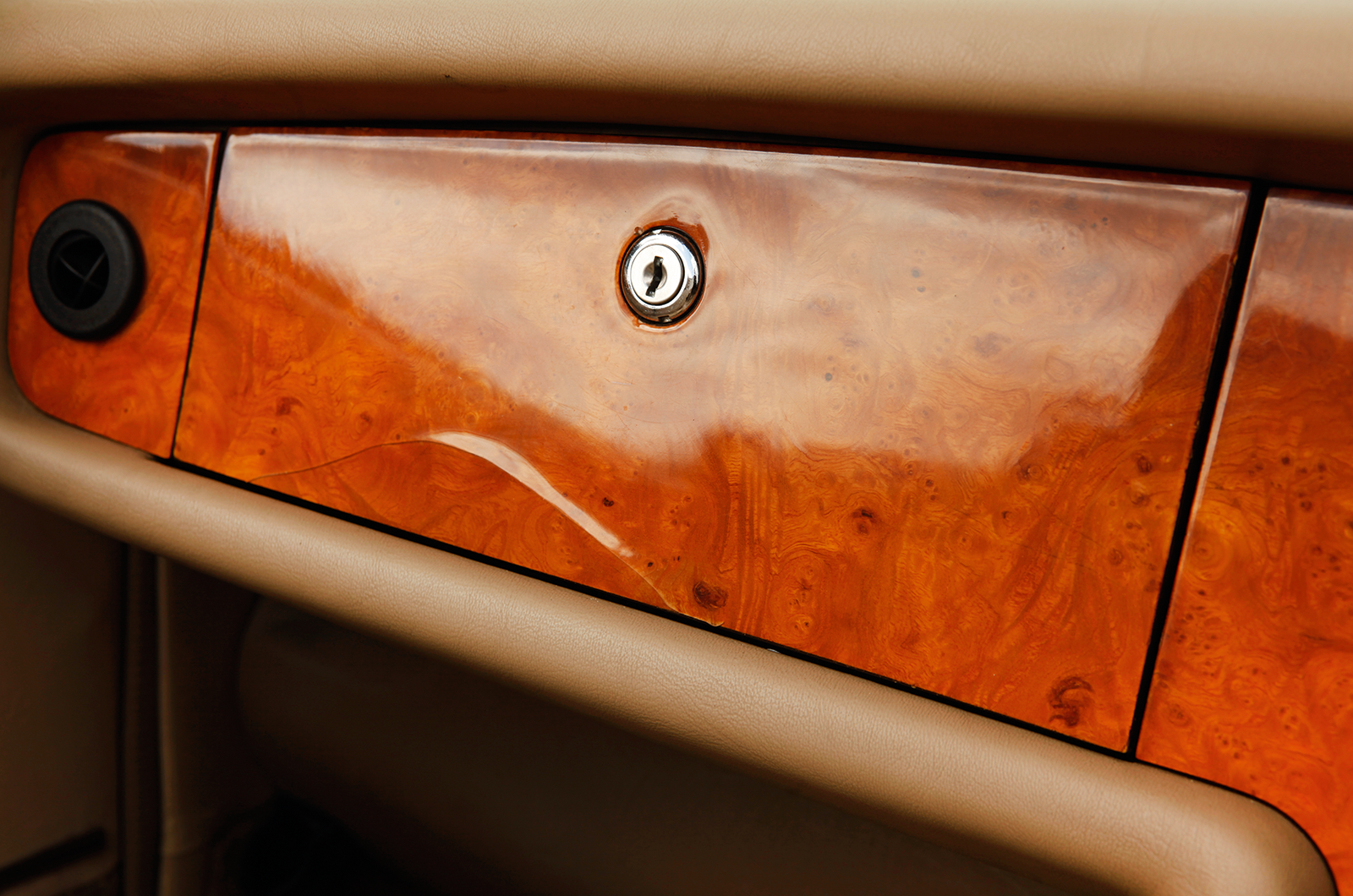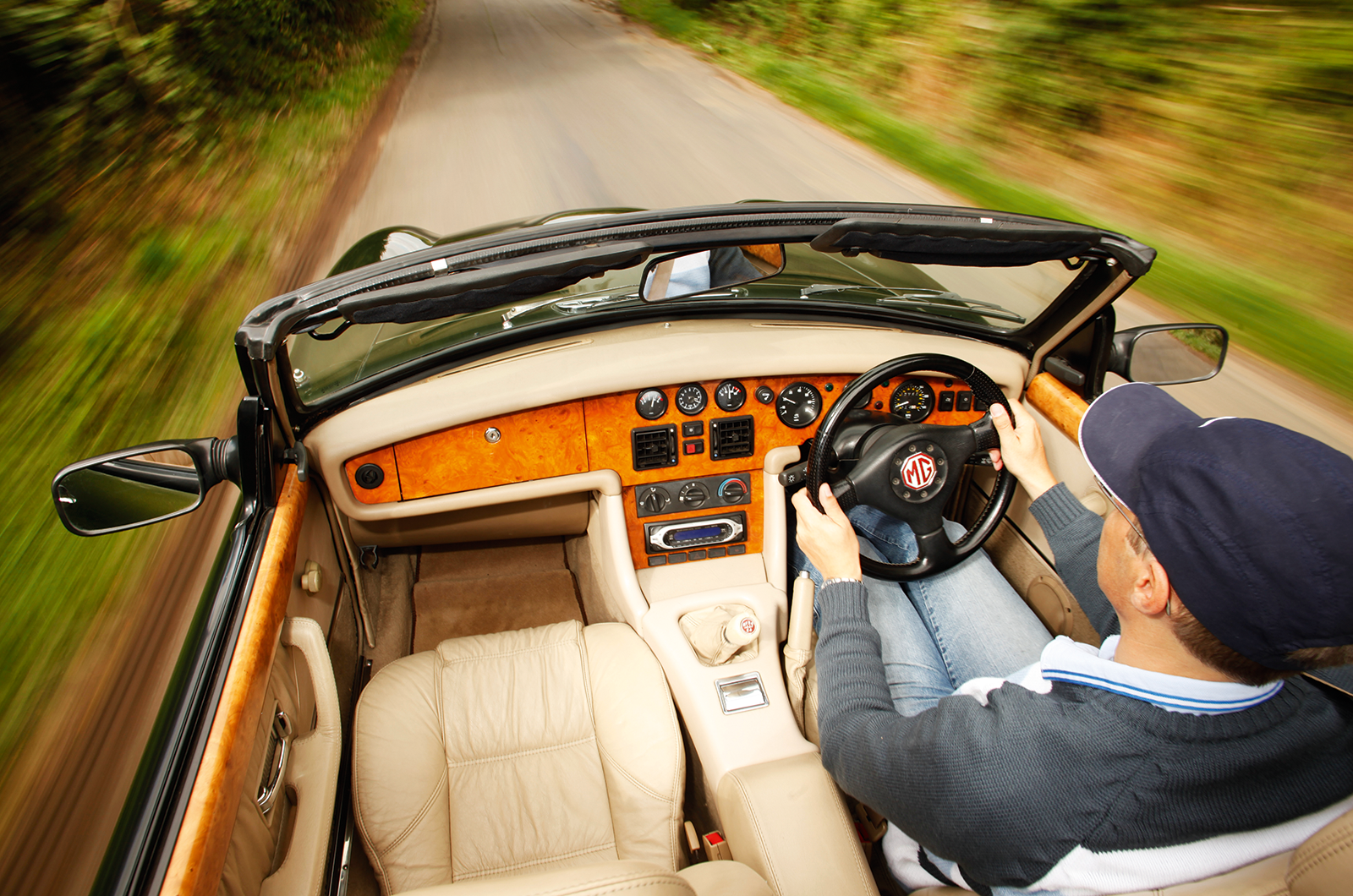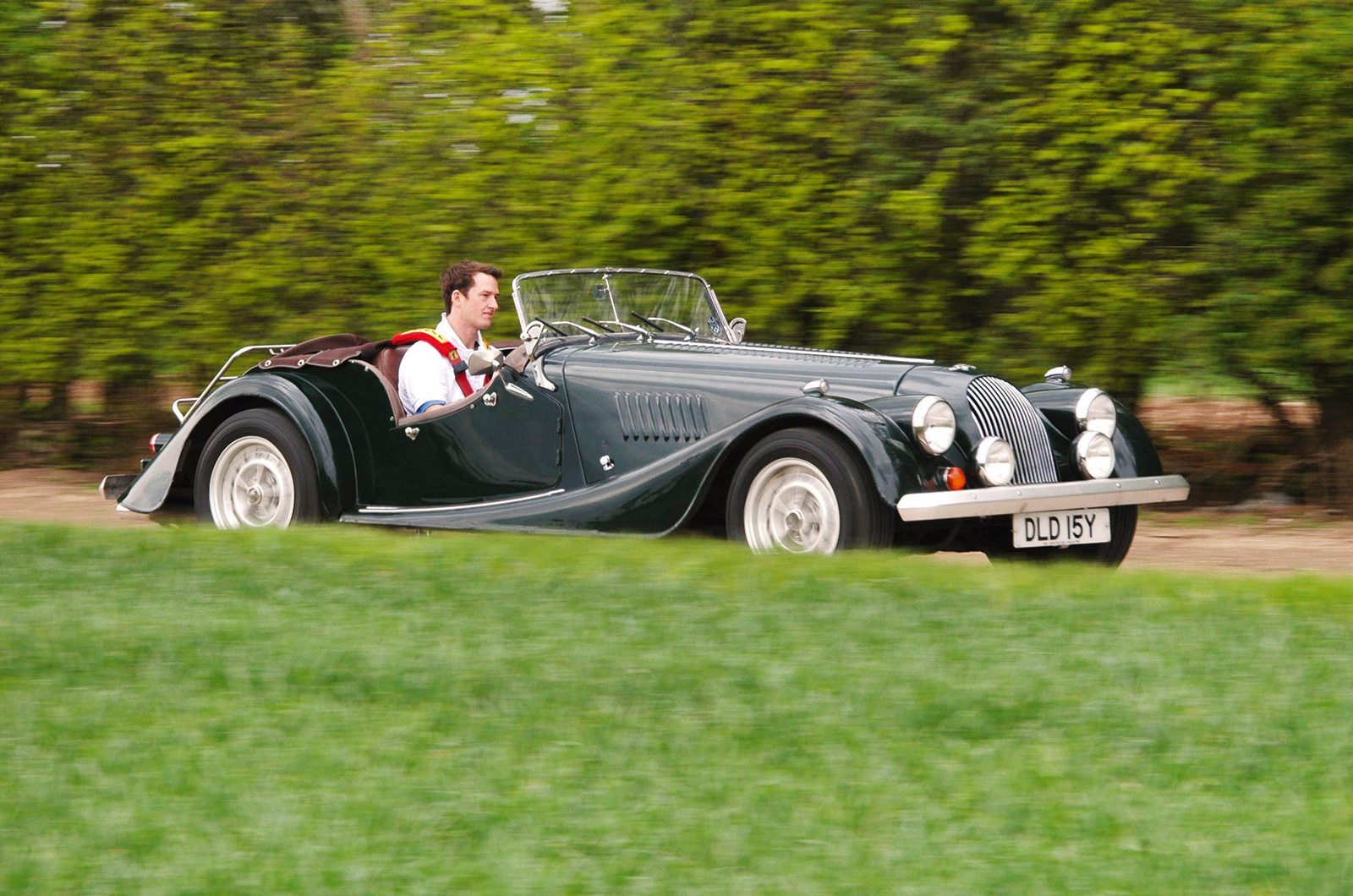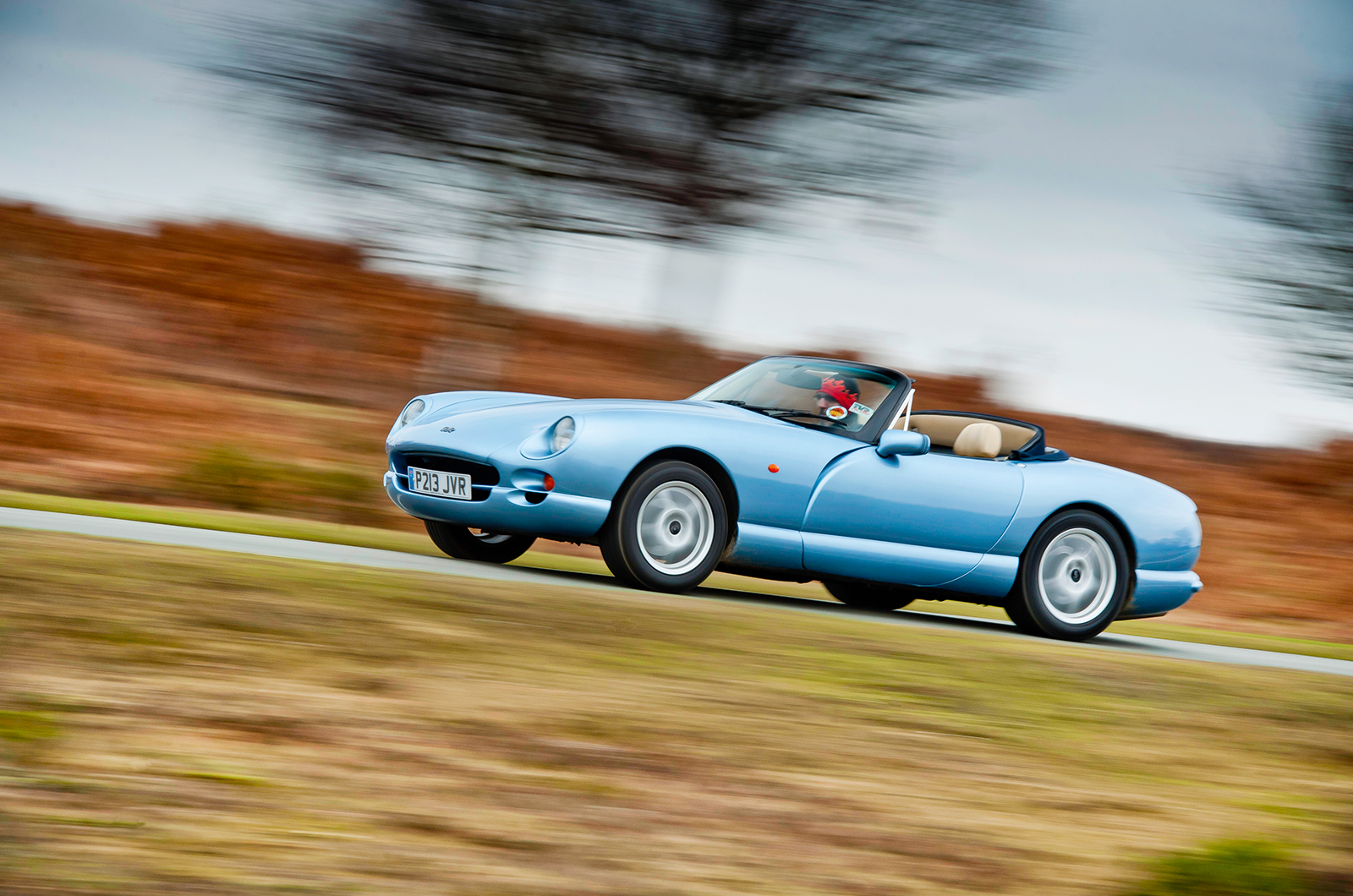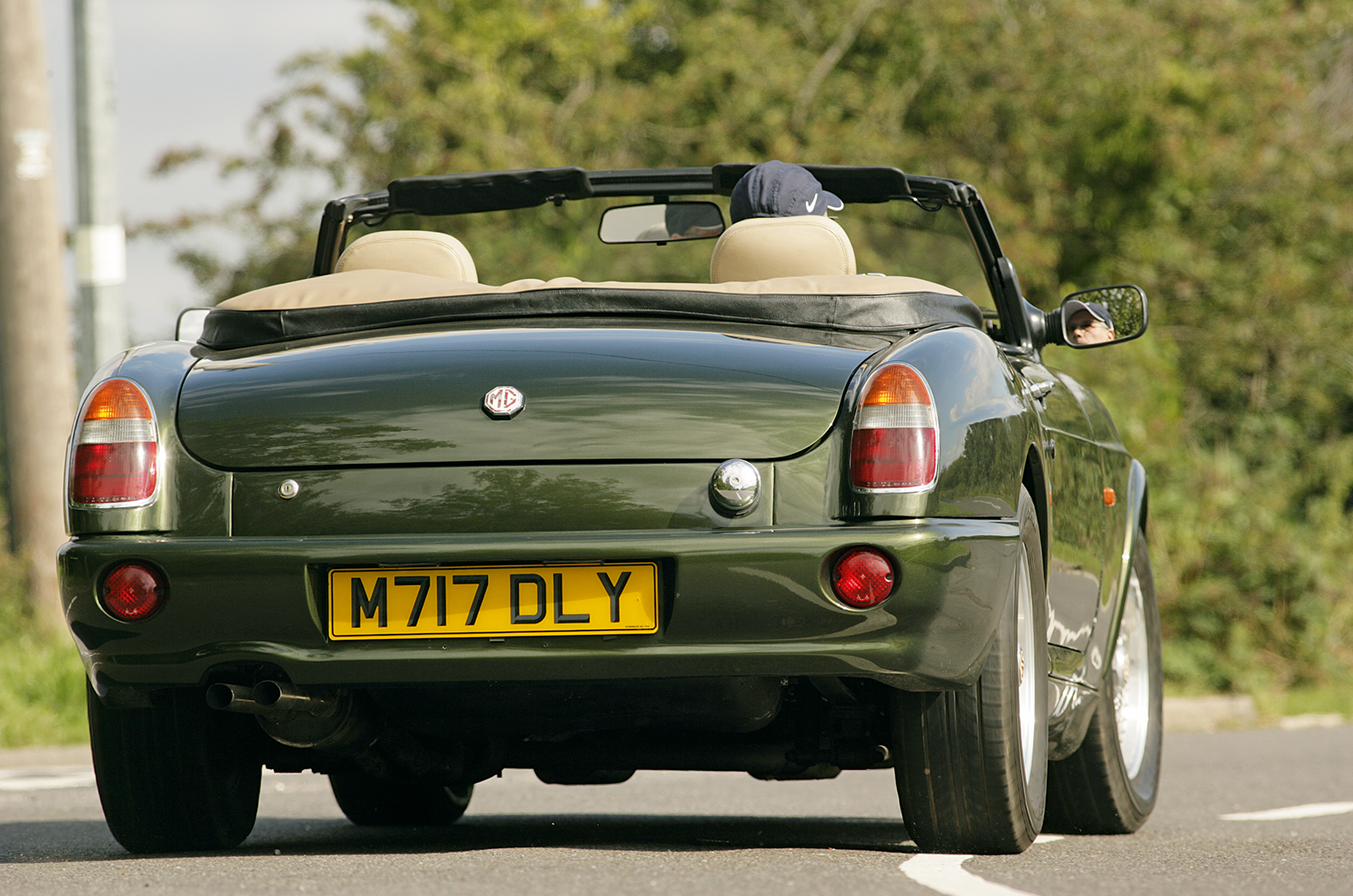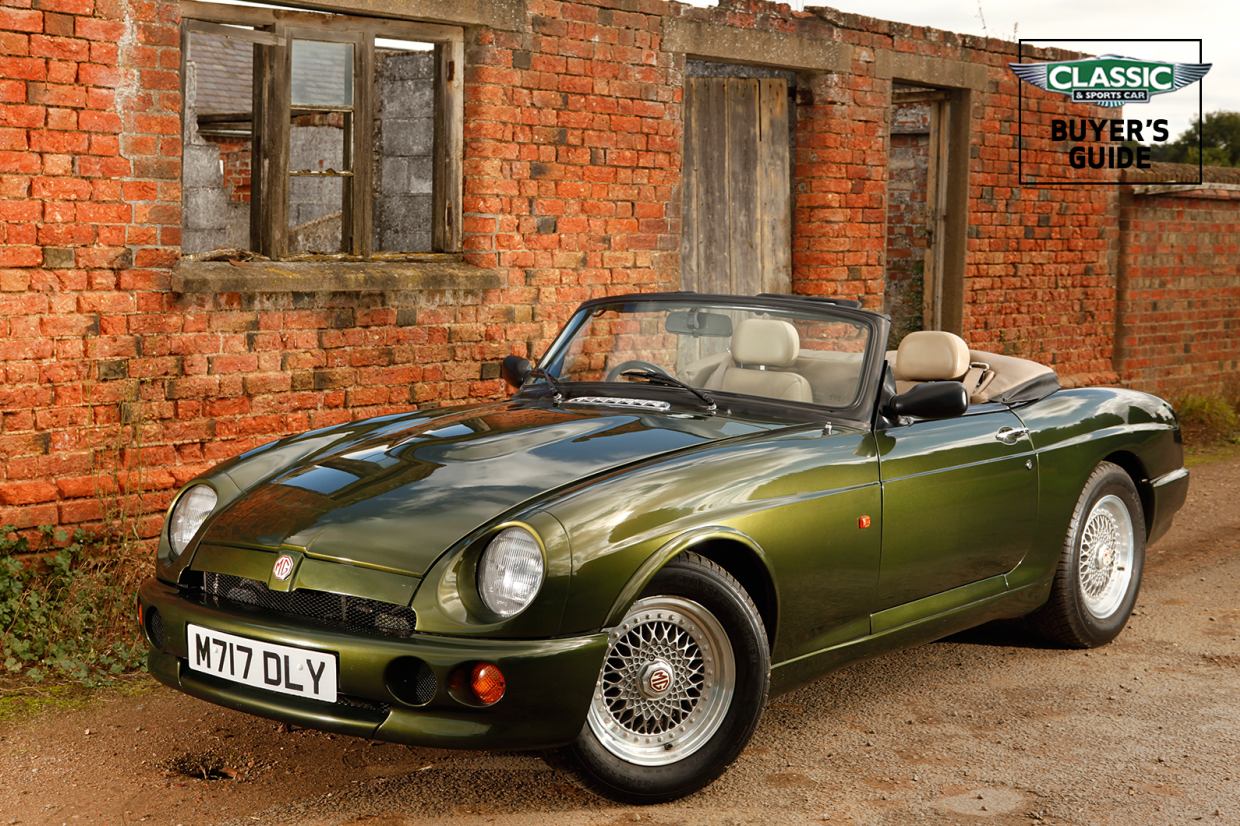
Why you’d want an MG RV8
A misfit when new, the RV8 is coming into its own as the ultimate factory derivative of the MGB, with strong performance, relaxed cruising, good looks and relatively little rust due to its electrophoretically coated shell.
When launched in 1993, it was criticised for the hard ride and unpredictable handling from its live rear axle and leaf springs; today, you either accept that as part of the character, or replace it with bespoke independent rear suspension.
David Bishop at British Motor Heritage reintroduced the factory MGB shell in 1988, and persuaded Rover to develop the RV8.
Rover was planning to launch a modern sports car in the mid-’90s and needed to give MG’s tarnished image a boost.
There had never been a factory-built V8-engined B roadster – just the GT V8 – so there was potential to make something really special with the Heritage bodies.

At its British Motor Show launch in 1992 – gold proved unpopular
A tiny (by car-manufacturer standards) budget of £5million was allocated and 15 months later the RV8 was born, using 5% standard B parts, 20% improved B bits and 75% new components.
Around 15 cars a week were turned out by 18 staff at the Cowley plant.

